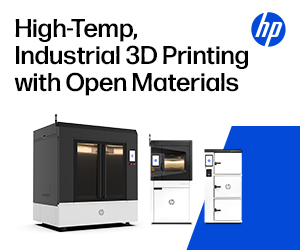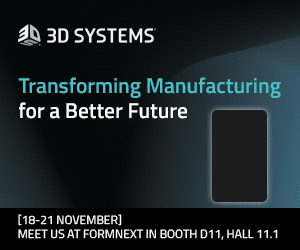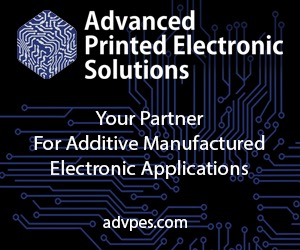UpNano, an Austrian company specializing in two-photon polymerization (2PP) additive manufacturing (AM), has launched a service bureau that will offer high-volume output of microscale parts. The new service, NanoPro, will rely on another new launch by the company, its NanoPro VT printer.
2PP 3D printing deploys near-infrared lasers (beyond the visible light spectrum) to produce parts with resolution size below the micrometer scale. This level of precision typically makes the manufacturing process lengthier and more expensive. However, the NanoPro VT leverages a seven-watt laser — versus the one-watt laser featured in the company’s NanoOne printer — to greatly accelerate throughput speed, all while maintaining the same resolution.
UpNano received €7 million (~$7.4 million) in a recent funding round, supporting the company’s continued expansion and diversification into new activities such as its service bureau capabilities. 2PP’s advantage for applications like microelectronics, optics, and bioprinting gives NanoPro the unique potential to translate high-level R&D work into commercially viable products.
Attendees of Formnext 2024 can learn more about UpNano and its new service bureau division at booth 11.1 in hall E40.
In a press release, the company’s CEO, Bernhard Küenberg, said, “With development of the NanoPro VT, UpNano is now in the position to offer the first fully integrated 2PP based service for industrial microparts. With over 20 years of experience in 2PP technology, our team is available to collaborate closely with customers to deliver tailored solutions from design via prototyping to serial production including delivery worldwide.”
UpNano’s CTO, Peter Gruber, said, “This outstanding performance makes it possible to print a million identical parts, or a million parts with individual modifications. In addition, the resolution of the printer allows structures and tolerances below 100 nm. The ability to print the entire surface of 200x200mm substrates is also unique. An automatic lens changer increases flexibility and enables optimized production cycles with the extremely robust NanoPro VT, which operates under ISO 5 cleanroom conditions, is temperature-stable and vibration-isolated.”
Reaching the nanometer scale in itself is a tremendous achievement, one which the semiconductor sector spent billions of dollars to accomplish in the 1990s and 2000s, eventually resulting in the AI boom currently buttressing the global economy. Now, the mass availability of printed parts with nanoscale resolution will introduce 2PP technology to a much wider audience, giving product and process engineers the ability to actualize ideas that were previously only imaginable.
With the international trade war over semiconductor technology apparently still only in its early stages, 2PP could become strategically indispensable to the world’s most powerful nations, given its potential to revolutionize the chip design process. If customers can print a million parts with individual variations, that means that chip designers can now order a million different iterations of the same underlying design, drastically speeding up the R&D phase for device manufacturers.
Additionally, the ability to print directly onto a substrate suggests similarly monumental implications for chip packaging, which has become just as important a consideration for the final product as the chips, themselves. UpNano may be the first company to give wide availability to 2PP production as a service, but with the market forces at play, it is highly likely that it will soon be joined by competitors.
Images courtesy of UpNano
Subscribe to Our Email Newsletter
Stay up-to-date on all the latest news from the 3D printing industry and receive information and offers from third party vendors.
Print Services
Upload your 3D Models and get them printed quickly and efficiently.
You May Also Like
Sustainability Meets Speed: How Latin America’s Medtech Industry is Reshaping Global Clinical Trials
The promise of additive manufacturing—specifically 3D printing—to transform medical device production is currently constrained by several critical factors. Medtech startups, in particular, face a formidable “proof-of-concept bottleneck.” They struggle not...
From Spare Parts to Strategic Advantage: How AM Is Reshaping Defense Readiness
When I talk with defense customers and partners about additive manufacturing, the conversation rarely starts with, “What can we print?” It usually starts with something like, “We can’t get this...
New 3D Printed Hydrogen Cell Factory Just Switched On in Catalonia
The Catalonia Institute for Energy Research (IREC) has opened a pilot plant that 3D prints advanced ceramic devices for renewable hydrogen systems. It’s described as the first facility on the...
3D Printing News Briefs, November 27, 2025: Awards, Sand Binder Jetting, Tabletop Gaming, & More
To all those who celebrate, happy Thanksgiving! In today’s holiday 3D Printing News Briefs, we’re starting off with some exciting news: the winners of this year’s Formnext Awards! Then, we’ll...


































